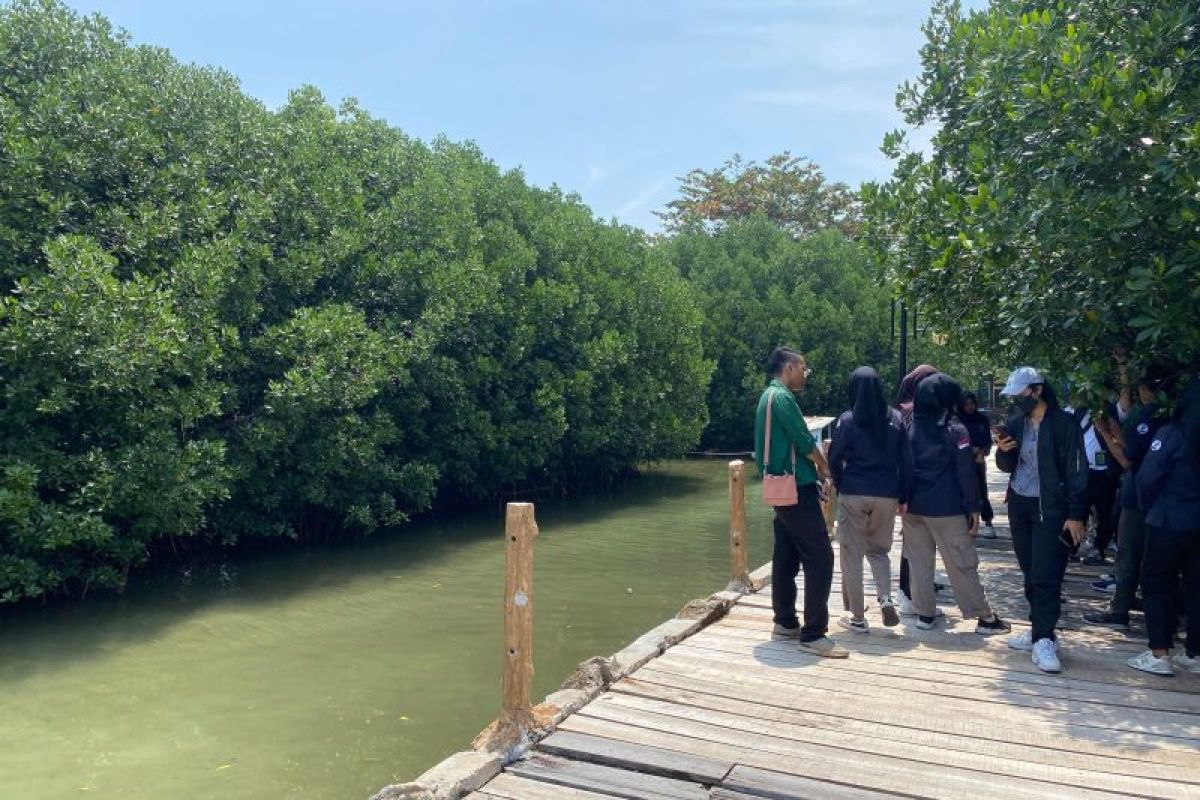That day, an extremely destructive earthquake measuring over 9 in magnitude off the west coast of Aceh province preceded a gigantic tidal wave, which claimed 227,898 lives across 14 countries, with Indonesians accounting for nearly half the fatalities.
Thus, it is paramount for countries sitting in the Pacific Ring of Fire, like Indonesia, to exercise a high level of vigilance against a megathrust earthquake-triggered tsunami as they are located at the point where three tectonic plates converge.
As per data from the National Disaster Mitigation Agency (BNPB), about 5,400 natural disasters struck Indonesia in 2023, with the majority of them being hydrometeorological ones, such as forest and land fires, extreme weather, floods, landslides, drought, and tidal waves.
Determined to shield its people from the threat of disasters, the Indonesian government has moved to overhaul its disaster mitigation capacity by pursuing mastery of related technology and innovations.
This has been done in tandem with educating schoolchildren about what to do to prevent and survive disasters.
Indonesia does not need to rely solely on advanced technology to anticipate disasters. As a country known for its natural wealth, Indonesia can use the mangroves scattered along its remarkably long coastline to anticipate tsunamis.
Didik Widyatmoko, an environmental researcher at the National Research and Innovation Agency (BRIN), noted that in addition to sustaining biodiversity, a healthy and well-preserved natural ecosystem can also help lessen the impact of natural disasters.
He argued that environmental conditions and natural disaster risk are like two sides of a coin. For instance, using a mangrove ecosystem for other purposes can render an environment more susceptible to the impacts of natural disasters.
He pointed to the way mangroves shielded the residents of Kabonga Besar village in Donggala district, Central Sulawesi province, from the calamity brought by a tsunami in 2018. Moreover, the impacts of Aceh’s tsunami in 2004 were less severe in mangrove-covered areas.
A survey team has found that mangroves, measuring 50–70 meters in thickness, protected homes in Kabona Besar village from the otherwise destructive impacts of the 2018 tsunami.
Residential areas lying beyond the embrace of the mangroves were likely swept by approximately tidal waves measuring five meters in height.
The height of the waves declined by four meters upon entering Kabosa Besar village thanks to the vegetation, which deserves the label of “green shield.”
It is safe to say that Indonesia should pay even closer attention to the condition of its mangrove ecosystems, which cover 3.44 million hectares of land, to reduce the risk of aquatic disaster-wrought destruction.
Saving mangroves
Taking note of the reliability of mangroves in shielding residential areas, the Indonesian government has continued to mobilize institutions to preserve these valuable ecological resources.
In October 2024, the BNPB took the initiative to plant about six thousand mangrove saplings to mark the 20th anniversary of the tsunami that left Aceh paralyzed.
To demonstrate its concern for preserving mangroves, the government has set the target of rehabilitating 600 thousand hectares of mangrove area through the establishment of the Peat and Mangrove Restoration Agency (BRGM).
For the cause, the government has received assistance from the World Bank through the Mangrove for Coastal Resilience program, which aims to rehabilitate 75 thousand hectares of mangrove forests across North Sumatra, Riau, North Kalimantan, and East Kalimantan provinces by 2027.
By the beginning of 2024, the government had managed to rehabilitate around 130 hectares of mangrove forests across the country.
Suwignya Utama, head of the BRGM’s Education and Socialization Working Group, affirmed that the need for mangrove rehabilitation stems from the fact that a loss or decline of mangrove forests could result in a variety of ecological problems.
As an example, he cited the consequences of mangrove degradation in Kuala Selat village in Indragiri Hilir district of Riau province, where a neglected mangrove ecosystem failed to shield local residents from abrasion and seawater intrusion, leaving coconut plantations damaged and submerging parts of the village.
A similar case was reported in Demak, Central Java, where erosion and abrasion on 2,116 hectares of land resulted in coastal recession.
In addition to preventing erosion and abrasion, mangrove ecosystems also wield the capacity to mitigate climate change by capturing three to five times more carbon dioxide emissions than tropical forests.
Hence, it is natural for Indonesia and countries around the world to attach higher priority to the preservation of such ecosystems.
Collaboration among state institutions, community organizations, and people, including at the grassroots level, is vital for successful and efficient mangrove rehabilitation efforts.
The BRGM has fostered cooperation with Muhammadiyah, one of Indonesia’s largest Islamic organizations, and the Communion of Churches in Indonesia (PGI) to educate the public about the importance of protecting mangrove forests.
Meanwhile, the Ministry of Forestry has taken measures to amplify Indonesia’s mangrove rehabilitation efforts, including by drafting a related government regulation.
The ministry's director of inland water and mangrove rehabilitation, Inge Retnowati, said that the regulation has been finalized and is pending President Prabowo Subianto's approval.
She explained that the regulation is expected to provide an integrated framework for cross-sector and cross-region management of mangrove protection.
Under the regulation, mangrove ecosystems would be identified as mangrove landscape units to push for the application of an approach that aligns with the socioeconomic and biophysical aspects of each ecosystem, she informed.
Disseminating information on the ecological value of mangrove forests to people at the grassroots level is a prerequisite to the sustainability of such ecosystems.
This would help put the government, the private sector, and members of the public on the same page about the need to protect the green shields for greater safety against potential natural disasters in coastal areas.
Related news: Indonesia drafts regulation to boost protection, value of mangroves
Related news: Indonesia's mangroves 12 times better in carbon absorption: President
Related news: Indonesia's KKI plants 1,200 mangroves in Maluku to boost conservation
Translator: Prisca T, Tegar Nurfitra
Editor: Azis Kurmala
Copyright © ANTARA 2024












